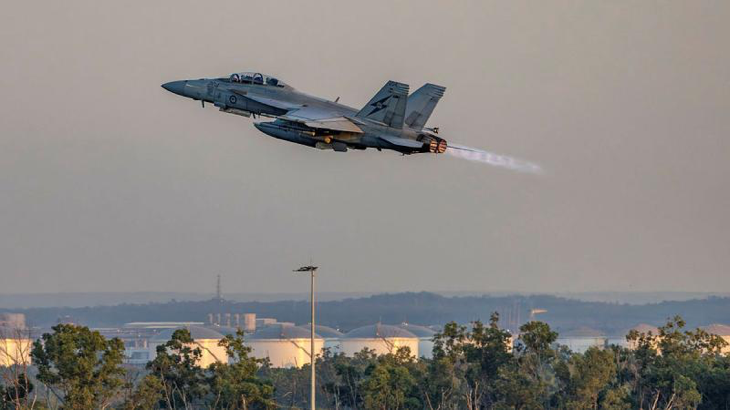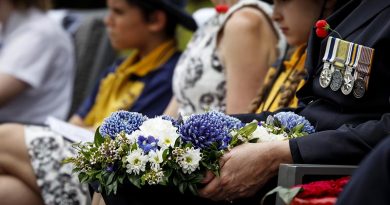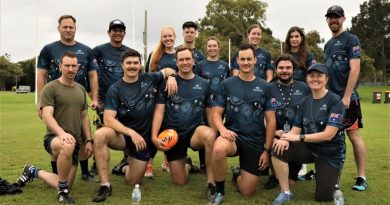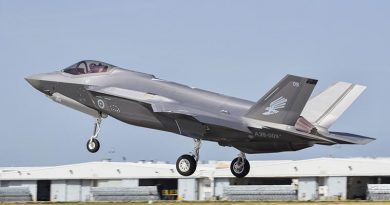Back-seat bandits on Exercise Pitch Black

As Exercise Pitch Black continues to play out in the Northern Territory and all eyes look towards the sky, the question begs – what is driving those jet engines above?
CAPTION: A RAAF FA-18F Super Hornet aircraft departs RAAF Base Darwin for a night flying mission as part of Exercise Pitch Black 2024. Story by Flight Lieutenant Imogen Lunny. Photo by Leading Aircraftwoman Annika Smit.
In Royal Australian Air Force two-seater platforms, the task of operating the state-of-the-art mission systems are split between the two highly trained and highly interoperable aircrew.
Alongside the pilot, the Weapons Systems Officer (WSO) adds additional lethality to the fight.
Pitch Black is an opportunity to showcase the skills and professionalism of the teams inside the cockpit.
In 1 Squadron’s F/A-18F Super Hornet, the team of two maintain Australia’s air combat edge.
As the pilot flies the aircraft and engages in air-to-air combat, the WSO strikes targets on the ground, organises close air support from above and locates enemy targets in the sky.
WSOs such as Flight Lieutenant Slade will work alongside different pilots within the squadron, building strong foundations that supports teamwork in the aircraft in day-to-day operations and exercises such as Pitch Black.
“This platform is pretty powerful – we put our minds together and come up with really good solutions,” Flight Lieutenant Slade said.
“Changing between pilots allows us to understand human emotion a bit more in the cockpit. It makes us stronger when it starts to get stressful in the airborne environment.”
Pitch Black involves some of the most advanced air combat capabilities in the world, flown and supported by a highly skilled workforce in a challenging training setting.
Participants are provided a unique opportunity to build teamwork and interoperability with the twenty participating nations, testing their limits over Australia’s north.
“I’ve really enjoyed flying with other countries – we learn so much from them and the way they operate their aircraft,” Flight Lieutenant Slade said.
“I have flown with the Republic of Korea and Republic of Singapore Air Force recently. It’s super rewarding, especially seeing a mission come together from the planning stages.
“The challenge for us is trying to speak the same language. English is the primary aviation language, however everyone has different mannerisms and English is potentially someone’s second or third language.
“It is a great opportunity to learn to communicate and work effectively – knowing we can achieve the same mission even though we do not speak the same language.”
The aircrew’s effectiveness, and the orchestration between aircrew working to operate one of Australia’s premier fighter aircraft, is a testament to the importance of teamwork to mission success.
.
.

.
.





